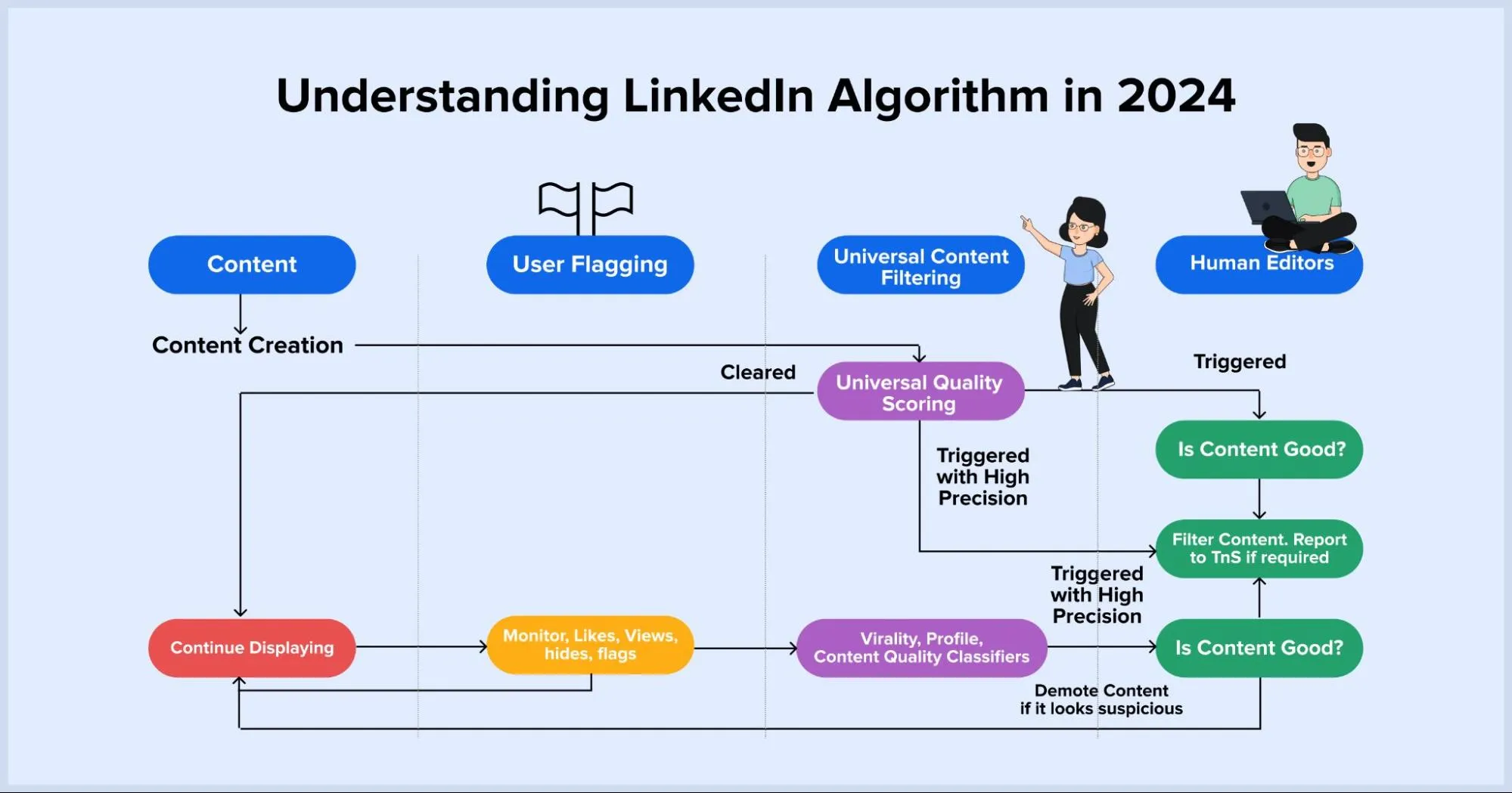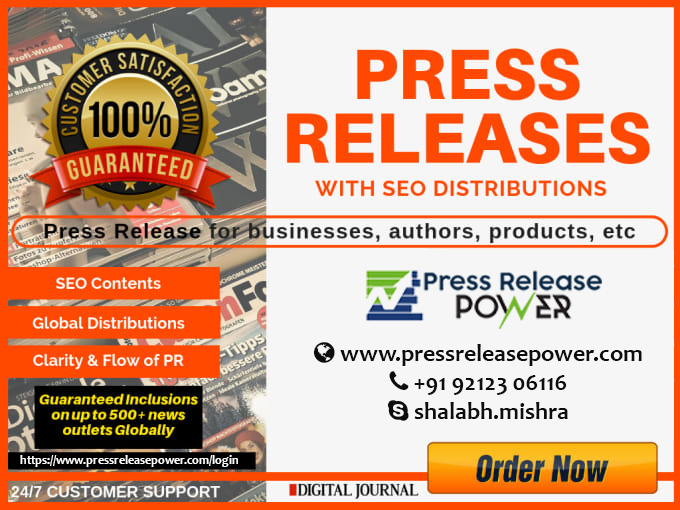Advanced Strategies for Leveraging LinkedIn's Algorithm
To further enhance your LinkedIn strategy, consider integrating these advanced tactics into your content plan
6. Utilize LinkedIn Analytics for Deep Insights
LinkedIn offers robust analytics tools that can provide deeper insights into your content’s performance. Leveraging these tools effectively involves
-
Content Performance Tracking Regularly review metrics such as post impressions, clicks, and interactions to gauge how well your content is resonating with your audience.
-
Follower Analytics Analyze your follower demographics and behaviors to better understand your audience and tailor your content accordingly.
-
A/B Testing Experiment with different types of content and posting times to identify what drives the most engagement and adjust your strategy based on the results.
7. Engage with Industry Trends
Staying current with industry trends can enhance your content’s relevance and appeal. This involves
-
Trend Analysis Monitor industry news and trends to ensure your content remains timely and relevant. Use tools like Google Trends or industry-specific news sources for insights.
-
Thought Leadership Share your insights and opinions on emerging trends to position yourself as a thought leader in your field. This can help increase your visibility and credibility.
-
Industry Hashtags Use trending hashtags related to your industry to increase the likelihood of your content being discovered by users interested in those topics.
8. Optimize Posting Times
Timing your posts effectively can significantly impact your content’s performance. To optimize posting times
-
Audience Behavior Analyze when your target audience is most active on LinkedIn. Use analytics tools to determine peak engagement times and schedule your posts accordingly.
-
Consistency Maintain a consistent posting schedule to keep your audience engaged and ensure your content regularly appears in their feeds.
-
Event-Driven Content Leverage industry events, conferences, or significant news to time your content for maximum relevance and impact.
9. Collaborate with Influencers and Industry Leaders
Partnering with influencers and industry leaders can boost your content’s reach and credibility. To effectively collaborate
-
Identify Key Influencers Research and identify influencers and industry leaders whose audience aligns with your target demographic.
-
Collaborative Content Co-create content, such as interviews, guest posts, or joint webinars, to leverage their audience and enhance your content’s visibility.
-
Engagement Engage with influencers by commenting on their posts, sharing their content, and building relationships to foster potential collaborations.
10. Enhance User Experience with Interactive Content
Interactive content can drive higher engagement and improve user experience. Consider incorporating
-
Polls and Surveys Create polls and surveys to encourage interaction and gather insights from your audience.
-
Quizzes and Assessments Develop quizzes or assessments related to your industry to engage users and provide valuable feedback.
-
Interactive Infographics Design interactive infographics that allow users to explore data and insights in a dynamic way.
Case Studies Successful LinkedIn Content Strategies
Examining real-world examples of successful LinkedIn content strategies can provide valuable insights and inspiration. Here are a few case studies highlighting effective approaches
Case Study 1 HubSpot’s Thought Leadership Content
HubSpot, a leading marketing and sales software company, effectively utilizes LinkedIn to share thought leadership content. By publishing in-depth articles and industry insights, HubSpot consistently engages its audience and establishes authority in the marketing space. Key strategies include
-
Educational Content HubSpot’s content focuses on providing actionable advice and educational resources to its audience.
-
Engaging Visuals The company incorporates high-quality visuals and infographics to enhance content appeal and engagement.
-
Regular Updates HubSpot maintains a consistent posting schedule to keep its audience informed and engaged.
Case Study 2 Microsoft’s Industry Trends and Innovations
Microsoft leverages LinkedIn to showcase industry trends and innovations, positioning itself as a leader in technology. Their approach involves
-
Timely Content Microsoft shares content related to emerging technologies and industry developments to capture current interest.
-
Video Content The company uses video content to explain complex topics and engage viewers with dynamic presentations.
-
Employee Advocacy Microsoft encourages employees to share content and insights, amplifying their reach and engagement.
Case Study 3 IBM’s Interactive and Data-Driven Content
IBM’s LinkedIn strategy focuses on interactive and data-driven content to engage its professional audience. Key elements include
-
Interactive Infographics IBM uses interactive infographics to present data in a visually engaging way.
-
Data-Driven Insights The company shares research and data-driven insights to provide value and establish credibility.
-
Engagement Strategies IBM actively engages with its audience through comments, shares, and discussions to foster a sense of community.
Future Trends in LinkedIn’s Algorithm
As LinkedIn continues to evolve, several trends are likely to impact the algorithm and content strategy
1. Increased Emphasis on AI and Machine Learning
LinkedIn is expected to further integrate AI and machine learning to enhance content personalization and relevancy. This may involve
-
Advanced Content Recommendation AI-driven algorithms could provide even more personalized content recommendations based on user behavior and preferences.
-
Enhanced Engagement Analysis Machine learning may offer deeper insights into engagement patterns and content effectiveness.
2. Greater Focus on Authenticity and Transparency
The platform may place a greater emphasis on authentic and transparent content. This could involve
-
Authentic Engagement Encouraging genuine interactions and discouraging manipulative tactics for engagement.
-
Transparency in Content Promotion Providing clearer guidelines on content promotion and sponsored posts to ensure transparency.
3. Expansion of Interactive Features
LinkedIn may continue to expand its interactive features to enhance user engagement. Potential developments include
-
New Interactive Tools Introduction of new tools for creating interactive content, such as augmented reality or gamified elements.
-
Enhanced Polling and Survey Features Improvements in polling and survey functionalities to drive higher user interaction.
Frequently Asked Questions (FAQ) About LinkedIn’s Algorithm
1. What is the LinkedIn algorithm?
The LinkedIn algorithm is a system used by LinkedIn to determine which content appears in users' feeds. It evaluates posts based on factors such as relevance, engagement, and connection strength to curate a personalized feed for each user.
2. How does LinkedIn’s algorithm prioritize content?
LinkedIn’s algorithm prioritizes content based on several factors:
- Relevance: Content that aligns with the user’s interests, job role, and industry.
- Engagement: Posts with higher likes, comments, and shares are given more visibility.
- Connection Strength: Posts from users with whom the recipient interacts frequently are prioritized.
- Timeliness: Recent and current content is favored over older posts.
- Content Type: The algorithm considers the type of content, such as text updates, images, or videos.
3. How can I improve my content’s visibility on LinkedIn?
To enhance your content’s visibility:
- Craft High-Quality Content: Focus on valuable, clear, and engaging posts.
- Engage Actively: Interact with your network by commenting, sharing, and responding to comments.
- Utilize LinkedIn Features: Use features like LinkedIn Articles, native videos, and relevant hashtags.
- Monitor Performance: Use LinkedIn’s analytics tools to track engagement and adjust your strategy.
4. What types of content perform best on LinkedIn?
Content that generally performs well on LinkedIn includes:
- Thought Leadership Articles: In-depth articles providing valuable industry insights.
- Engaging Visuals: High-quality images, infographics, and videos.
- Timely Updates: Content related to current industry trends or news.
- Interactive Content: Polls, surveys, and quizzes that encourage user interaction.
5. How often should I post on LinkedIn?
Consistency is key. Aim to post regularly, ideally several times a week, to keep your audience engaged and maintain a visible presence. Analyze your audience’s activity patterns to determine the optimal posting frequency and timing.
6. How does LinkedIn handle sponsored content?
LinkedIn’s algorithm treats sponsored content similarly to organic posts but may offer different visibility based on targeting and budget. Sponsored content is designed to reach a broader audience beyond your immediate connections.
7. Can I influence the LinkedIn algorithm?
While you can’t directly change the algorithm, you can influence its outcomes by:
- Creating High-Quality Content: Focus on engaging and relevant posts.
- Increasing Engagement: Encourage likes, comments, and shares.
- Building Strong Connections: Engage actively with your network and industry peers.
- Staying Updated: Keep up with algorithm changes and adjust your strategy accordingly.
8. What role do hashtags play in LinkedIn’s algorithm?
Hashtags help categorize your content and make it discoverable to users interested in specific topics. Using relevant and trending hashtags can increase your content’s reach and visibility.
9. How can I use LinkedIn analytics to improve my content strategy?
LinkedIn analytics provides insights into:
- Post Performance: Metrics such as impressions, clicks, and engagement.
- Audience Insights: Demographic information about your followers.
- Content Trends: Which types of content perform best. Use this data to refine your content strategy, identify successful tactics, and adjust your approach for better results.
10. What are some common mistakes to avoid with LinkedIn’s algorithm?
Common mistakes to avoid include:
- Posting Irrelevant Content: Ensure your posts are relevant to your audience’s interests.
- Neglecting Engagement: Failing to interact with your network can limit your content’s reach.
- Overusing Hashtags: Excessive or irrelevant hashtags can appear spammy.
- Ignoring Analytics: Not using LinkedIn’s analytics tools can hinder your ability to optimize your content strategy.
Get in Touch
Website – https//www.webinfomatrix.com
Mobile - +91 9212306116
Whatsapp – https//call.whatsapp.com/voice/9rqVJyqSNMhpdFkKPZGYKj
Skype – shalabh.mishra
Telegram – shalabhmishra
Email - info@webinfomatrix.com






















